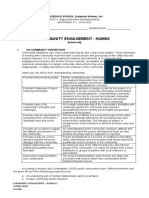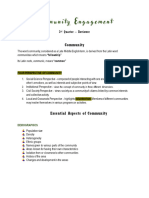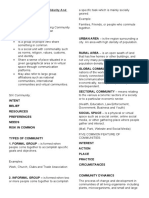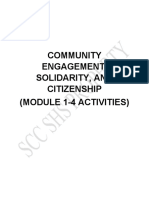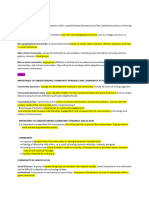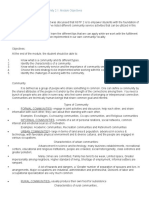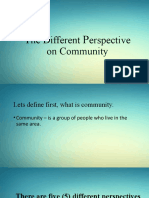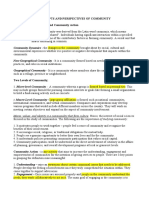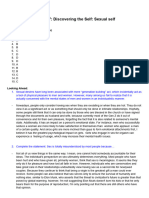0% found this document useful (0 votes)
6 views2 pagesCESC Reviewer
The document outlines various forms of community engagement, including direct service, advocacy, and philanthropic giving, as well as different types of communities such as urban, rural, suburban, and rurban. It discusses perspectives on community, including systems, social, virtual, and individual perspectives, emphasizing the importance of community dynamics and involvement in service design. Additionally, it highlights roles within communities, such as information specialists and connectors, and the significance of community resilience and collective planning.
Uploaded by
krisiamaedayday62Copyright
© © All Rights Reserved
We take content rights seriously. If you suspect this is your content, claim it here.
Available Formats
Download as DOCX, PDF, TXT or read online on Scribd
0% found this document useful (0 votes)
6 views2 pagesCESC Reviewer
The document outlines various forms of community engagement, including direct service, advocacy, and philanthropic giving, as well as different types of communities such as urban, rural, suburban, and rurban. It discusses perspectives on community, including systems, social, virtual, and individual perspectives, emphasizing the importance of community dynamics and involvement in service design. Additionally, it highlights roles within communities, such as information specialists and connectors, and the significance of community resilience and collective planning.
Uploaded by
krisiamaedayday62Copyright
© © All Rights Reserved
We take content rights seriously. If you suspect this is your content, claim it here.
Available Formats
Download as DOCX, PDF, TXT or read online on Scribd
/ 2



